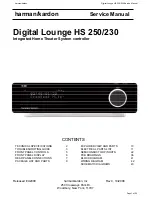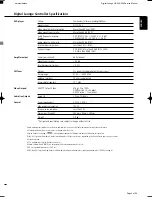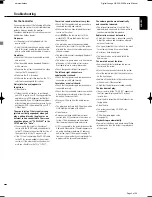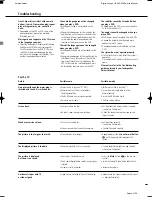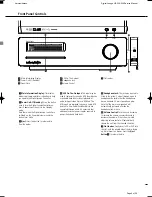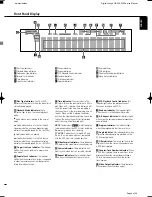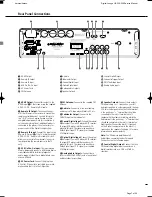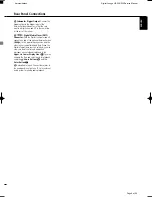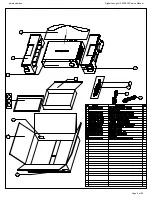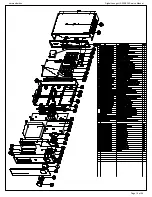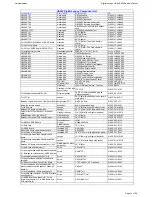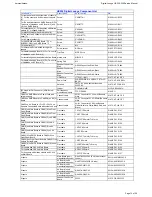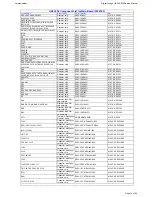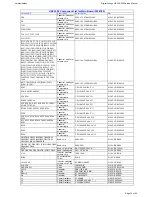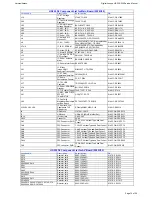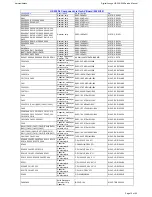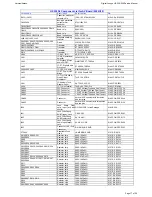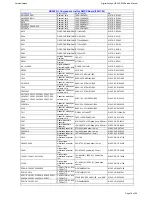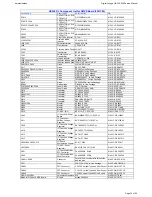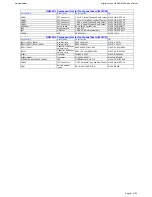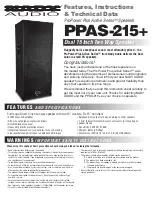
Rear Panel Connections
CF
7
E
D9
8A
6
5
0
1
2
3
B
4
HDMI Output
Remote IR Output
Remote IR Input
USB On-The-Go Input
AC Power Cord
FM Antenna
Audio In
Subwoofer Output
Coaxial Digital Input
Optical Digital Input
Analog Audio Outputs
Speaker Outputs
Coaxial Digital Output
Subwoofer Trigger Output
DMP The Bridge Input
Analog Audio Inputs
HDMI Output:
Connect this output to the
HDMI input
J
of the screen, using the supplied
HDMI - SP-DIF - Remote In/Out cable.
Remote IR Output:
This connection per-
mits the IR sensor in the receiver to serve other
remote controlled devices. Connect this jack to
the “IR IN” jack on Harman Kardon or other
compatible equipment. Note this connection is
only necessary for optional, additional products
connected to the player. It is not necessary for
proper control of the Digital Lounge system.
Remote IR Input:
Connect this input to the
Remote IR Output
U
of the TV, using the special
HDMI - SP-DIF - Remote In/Out cable. This will
allow you to control all components in your sys-
tem by pointing the remote control to the TV
only.
USB On-The-Go Input:
This input may be
used to temporarily connect a USB thumb device
or portable hard disk for direct playback of
audio, image of video files, a digital photo cam-
era or a USB hub.
AC Power Cord:
Connect this plug to an
AC outlet. If the outlet is controlled by a switch,
make certain that it is in the ON position.
FM Antenna:
Connect to the supplied FM
antenna.
Audio In:
Connect to a line-level analog
audio source: TV, tape player, Minidisc, PC, etc.
Subwoofer Output:
Connect to the
SUB/LFE input on the subwoofer.
Coaxial Digital Input:
Connect the coaxial
digital output from a DVD player, HDTV receiver,
LD player, MD player, satellite receiver or CD
player to this jack. The signal may be either a
Dolby Digital signal, DTS signal or a standard
PCM digital source.
Optical Digital Input:
Connect the optical
digital output from a DVD player, HDTV receiver,
LD player, MD player, satellite receiver or CD
player to this jack. The signal may be either a
Dolby Digital signal, DTS signal or a standard
PCM digital source.
Analog Audio Outputs:
Connect these
jacks to the RECORD/INPUT jacks of an optional
audio recorder for recording.
Speaker Outputs:
Connect these outputs
to the ma or – terminals on your left
and right speakers. In conformance with the new
CEA color code specification, the White terminal
is the positive, or "+" terminal that should be
connected to the red (+) terminal on Left
speaker with the older color coding, while the
Red terminal is the positive, or "+" terminal that
should be connected to the red (+) terminal on
Right speaker. Connect the black (–) terminals
on the Digital Lounge system to the black (–)
terminals on the speakers. See page 19 for more
information on speaker polarity.
Note:
You’ll find more details about all
Audio/Video connections under Setup and
Connections on the following pages.
Coaxial Digital Output:
Connect this jack
to the matching digital input connector on a
digital recorder such as a CD-R or MiniDisc
recorder.
0019CSK - Digital Lounge 232EX_240HD ENG v1(12).qxp:0019CSK - DigitalLounge 250HD UK v6 12/06/08 12:01 Side 10 (Sort/Black plad
harman/kardon
Digital Lounge HS 250/230 Service Manual
Page 7 of 56
Summary of Contents for Digital Lounge HS 230
Page 10: ...harman kardon Digital Lounge HS 250 230 Service Manual Page 10 of 56...
Page 36: ...harman kardon Digital Lounge HS 250 230 Service Manual Page 36 of 56...
Page 37: ...harman kardon Digital Lounge HS 250 230 Service Manual Page 37 of 56...
Page 38: ...harman kardon Digital Lounge HS 250 230 Service Manual Page 38 of 56...
Page 39: ...harman kardon Digital Lounge HS 250 230 Service Manual Page 39 of 56...
Page 40: ...harman kardon Digital Lounge HS 250 230 Service Manual Page 40 of 56...

